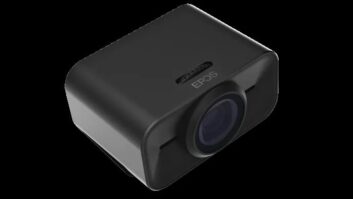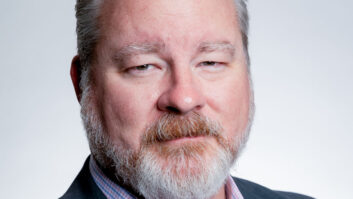Canon served notice that it would not give up its No. 1 global position in digital cameras and multifunction printers (MFPs) without a fight.
That was one of the messages chairman/CEO Fujio Mitarai gave visiting U.S. press here, during a tour of its facilities last week.
Mitarai said Canon’s goals include of reaching No. 1 standing in all of it market segments over the next few years, including office imaging products, computer peripherals, business information products, optical products as well as cameras. He noted Canon reached $35 billion in worldwide sales in 2006 and sports a strong balance sheet. He did not rule out a large merger and acquisition for the right company with technology Canon needs to succeed.
Among the highlights of the four-day trip to the company’s Shimomaruko headquarters and a visit to an office products plant in Toride, Japan:
- Although European Union sales are the most of any region in the world at 31 percent, “the strength of the North American market is essential for us. I have great expectations for Canon U.S.A.,” Mitarai said.
- The mention of the status of SED display technology caused a bit of unease from president/COO Tsuneji Uchida during a press conference. On May 3, Nano-Proprietary won a lawsuit seeking to void a licensing agreement between the Texas-based company and Canon. “We greatly respect the intellectual property rights of others,” Uchida said, “as well as our own.” That said, he noted that Canon would appeal the verdict. It is also continuing development of SED displays, Toshiba continues its support and according to a company spokesperson, Canon will introduce them only in Japan in the fourth quarter in very limited quantities.
- “We will not chase Kodak” was the definitive word from Katsuichi Shimizu, printer division CEO, on that company’s attempt to drive down the cost of ink cartridges.
- Canon U.S.A. president Joe Adachi said he felt bad for Kodak’s poor current state of affairs, noting it had carried the imaging message around the world for many years. “With our capabilities from input (cameras) to output (printers), it’s our responsibility to promote digital imaging to broaden the market for everyone.”
No new mainstream cameras or printers were unveiled here. Canon U.S.A. did announce the HR10 on May 7, its first AVCHD camcorder for $1,199, which is due in August. And Canon had the $4,500 EOS 1D Mark III on hand to play with, but this 10 fps 10-megapixel D-SLR is geared for pros. Small quantities will begin shipping to dealers soon. Also on hand was the one-year-delayed PIXMA Pro9500 printer.
When queried on why it took the company so long to introduce the printer, Shimizu candidly said it had difficulty handling black-and-white prints (a key requisite for advanced amateurs and pros) so they held back until they were happy with the performance. It’s shipping now in the United States. This new pigment-based printer will be just one of many to release in the future, according to Shimizu.
As for printing in general, Shimizu said even with the explosion of digital photography, the number of prints has remained fairly steady at around 120 billion per year — with the vast majority made at retail rather than the home. Canon’s solution to increase the number of prints made at home was to make the process even easier so consumers would opt for the convenience and privacy of at-home printing. The company did show a prototype of a high-speed inkjet printer for retailers but made no specific announcements when or if it would be introduced.
Masaya Maeda, director and chief executive of Canon’s image communication products operations, said this was the 20th anniversary of EOS cameras. Since 1987 27 million film and digital EOS cameras have been sold along with 13 million EF lenses.
Canon has introduced 83 PowerShot models over the years, totaling 63 million units. He stressed Canon is No. 1 in d-SLR and point-and-shoot digicams with a production capacity of 20 million per year from five factories based in Japan and Asia. Even though digital is the name of the photographic game, Maeda said Canon would “continue production as long as there are users of film cameras.”
Hiroshi Sano, GM of the consumer products design division, showed some mockups of some blue-sky digital cameras and detailed the design philosophy of the company. What was surprising was that Sano and his team sampled the sounds of many different analog camera shutters in order to create the “click” consumers hear when they press the shutter of a digital camera. Sano admitted his favorite design was the original ELPH that recently celebrated its 10th anniversary last year.
Also joining the press and analysts were several top Canon U.S.A. execs lead by president Joe Adachi and senior VP Eliott Peck. “By providing media and analysts an opportunity to visit our corporate headquarters in Japan and meet our top executives and product management team, they got a better sense of Canon’s rich heritage as a technology innovator and how our culture continues to influence our evolution as an industry leader,” Peck told TWICE.













